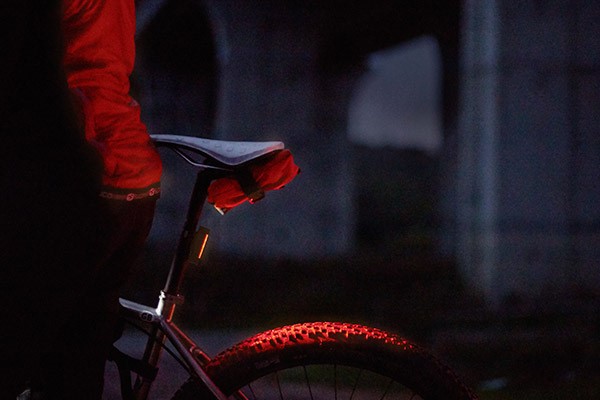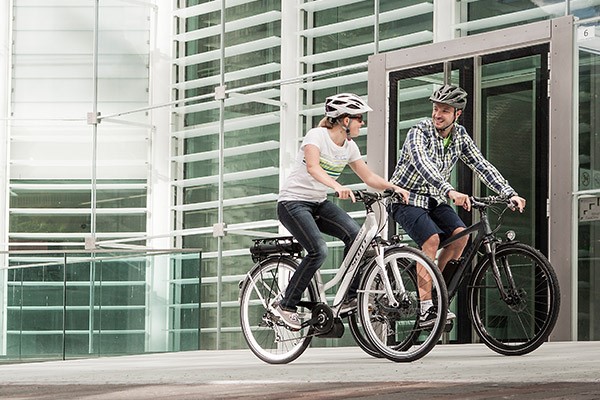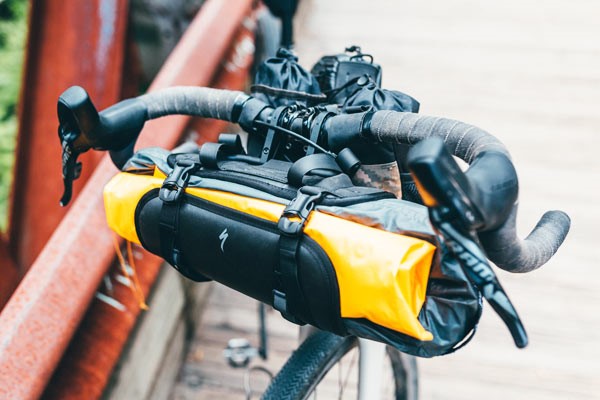Let your bike carry the load
There are lots of reasons why you might want to carry luggage on your bike, whether that's a change of clothes with you when you cycle to work, or you're preparing for a fully-loaded bike touring expedition.
Rucksacks can be useful for cycling, but it's much better to let your bike carry the weight if you can. You'll be far more comfortable and it'll save you from an aching back and shoulders. You can also carry much, much more. The kind of luggage you carry with you will depend on what you can fit to your bike and how much stuff you need to carry.
Small loads
Seatpacks
If you just need to carry a few essential spares, a seatpack is the way forward. Seatpacks fit snugly under the back of your saddle, so they don't affect your bike's aerodynamics.
Even the smallest seatpacks have room to squeeze in a multi-tool, repair kit and spare inner tube. Larger seatpacks will accommodate a mini pump, more tools and perhaps even a tightly folded gilet.
For even more luggage, a saddle bag will fit in the same place as a seatpack and will allow you to carry spare food or a change of clothes.


Rear loading
Bike racks
To carry more luggage on your bike, a rear luggage rack is the way forward. You can attach pannier bags and trunk packs to a rear rack, or you can use bungees and straps to simply lash your gear to the top of it.
Before buying a rear rack, you must make sure your bike has the necessary eyelets in the frame to fit it. There are usually one either side near the rear dropouts and another pair higher up on the seatstays.
Be aware that it can be particularly difficult to fit a rack to some bikes with disc brakes, although you can buy disc-brake racks specifically designed to address this.
If your bike cannot take a traditional rack, there are some innovative racks available to fit to your seatpost instead. For cycle touring, you can also fit a front rack to the front fork of your touring bike. His means you will be able to carry two large panniers at the rear and another two smaller panniers up front.
Side loading
Panniers
Panniers are a really stable way to carry a lot of luggage on your bike.
Pannier bags hang from the sides of a luggage rack, so they are a secure way to carry heavy or bulky luggage, keeping the bike's centre of gravity low.
For smaller loads, such as commuting, it's fine to have a single pannier on one side. If you're carrying more weight, it's better to have two panniers and distribute the weight evenly on either side for safety and handling.
Panniers range from small, lightweight shopping and commuting panniers, to enormous touring panniers that are incredibly hardwearing and totally waterproof.


Front loading
Handlebar bags
Handlebar bags are really useful if you need your essentials close at hand.
If you like to have things like sun cream, maps, mobile phone and wallet easily accessible while you cycle, a handlebar bag is indispensable.
Handlebar bags are especially convenient if you need to hop on and off the bike a lot. They unclip easily from the front of your bike, so you can carry your valuables with you without having to root about in your panniers.
Some bar bags have a shoulder strap attached for this purpose. Many also have a clear pocket on the top - because of their position on the bike, they're a convenient place to put a map.
Top loading
Trunk bags
Trunk bags and rack packs are a streamlined way to carry extra luggage.
Trunk bags aren't enormous, but they will hold a lot more than a seatpack. Because they're positioned behind you on the bike, they don't affect your aerodynamics. Your rack supports the weight, so you can carry fairly heavy loads.
Rackpacks often have bungees on the top to stuff in even more luggage, plus some even have unzippable pockets on the side that drop down, effectively giving you a small pair of panniers as well.






